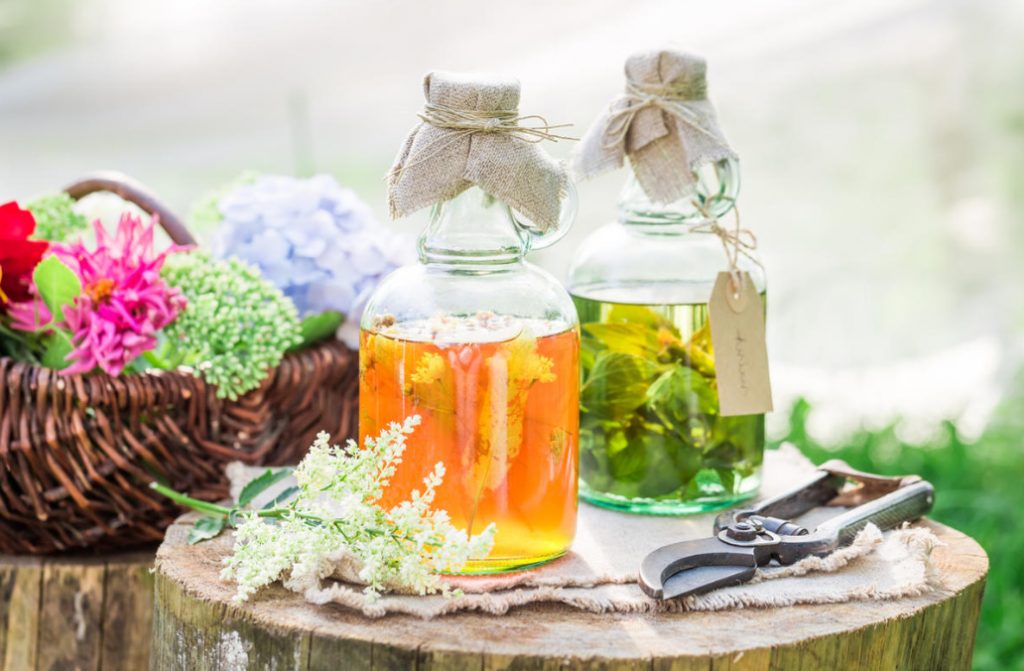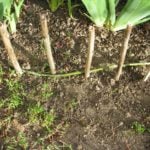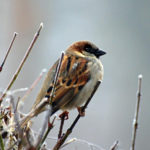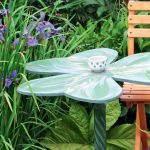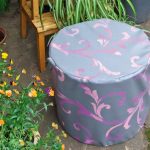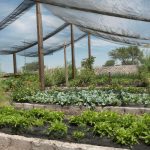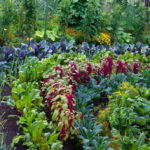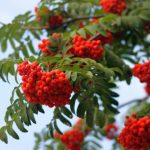We continue to get acquainted with the “wine” species of plants, because the topic was interesting and useful. Today we will invite 7 more wonderful plants.
It is from their numerous fragrant (usually) flowers rich in nectar that the so-called flower wines are prepared.
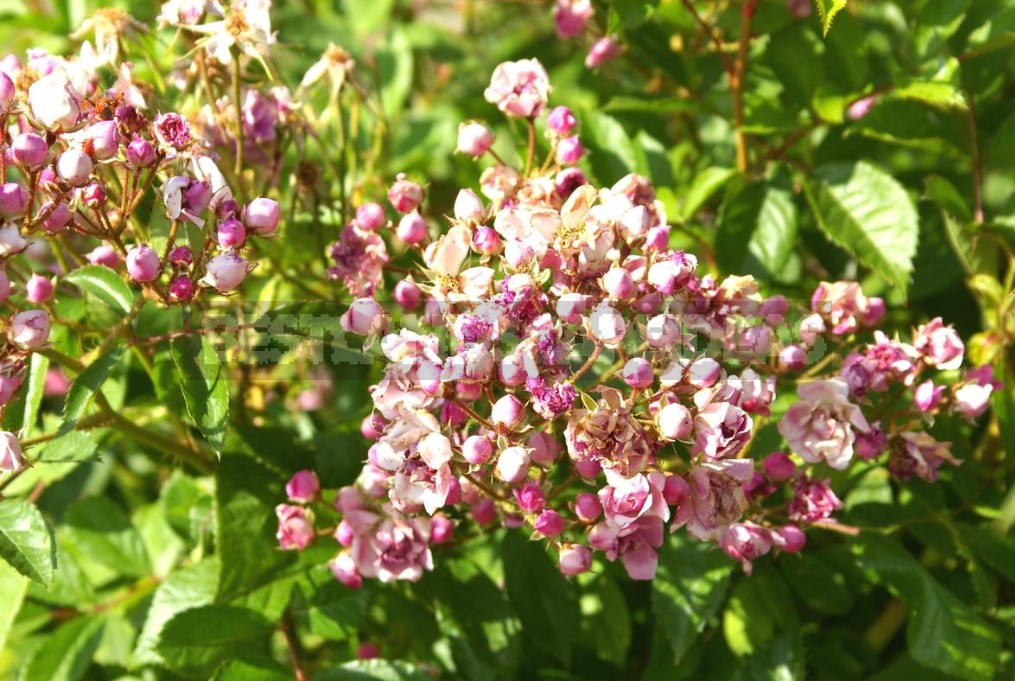
Of course, such drinks “on the fan”. However, if you have the desire and all the necessary ingredients, why not try to create your own individual product? The result can be very, very successful!
Advantages of floral wines
- They are the most budget (even compared to fruit), as they put much less sugar: 4-5, 5 liters of wine will need only 1.5-2 kg of sugar.
- Wines with a natural pleasant smell of flowers do not need additional flavoring.
Cons of floral wines
- Without the addition of acids, floral wines will not ferment, but rot, so 1-2 lemons (with or without zest, if the raw material has its own strong pleasant aroma) or 1-2 teaspoons of citric acid are added to 4 liters of wine.
- In floral wines without a bright pronounced aroma should be used fragrances.
The floral nuances of the procurement of raw materials:
- collect in dry Sunny weather, closer to 12 o’clock in the afternoon;
- do not wash, just shake off dust and insects.
Preparation of flower raw materials:
- it is necessary to proceed from the fact that 4 liters of wine will require at least 1-liter jar of flowers (without leaves, stems, tightly Packed);
- flowers pour 3.5 liters of water;
- boil for 5 minutes.;
- leave for 1 day to infuse;
- press flowers;
- in the broth add lemon, or citric acid, zest;
- separately, prepare the syrup (0.5 liters of water 1 kg of sugar);
- pour the syrup into the broth, add 8-10 dry raisins (wine yeast) or fresh raspberries.
Fermentation process of flower wine
- 1-2 days keep in a warm place;
- then pour into a bottle, put on the neck of a rubber glove with a pierced pin hole (for the release of carbon dioxide);
- after the gloves fall off the fermentation process is over;
- the wine is poured into a clean container carefully, without sediment, hermetically closed and put in a dark cool place to stand.
Sambucus nigra
Many summer residents easily recognize this deciduous shrub with ash-gray bark and sparsely feathered leaves. Well, if any doubts remain, they will disappear in may or June, when the elder will decorate fragrant small yellowish-white flowers collected in umbellate drooping inflorescences.
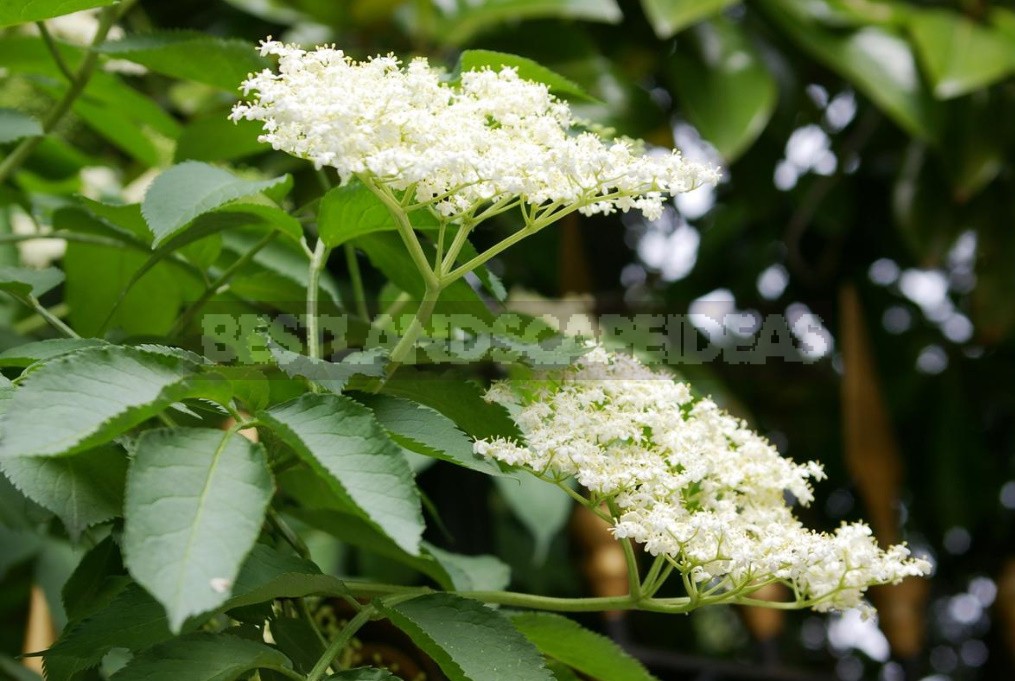
The floral nuances of the procurement of raw materials
For 2 liters of wine, 30-40 large umbrellas of flowers with a sweet taste will be required. Harvested during the flowering, until the moment of shedding. Flowers (raw materials) retain their quality up to 3 years.
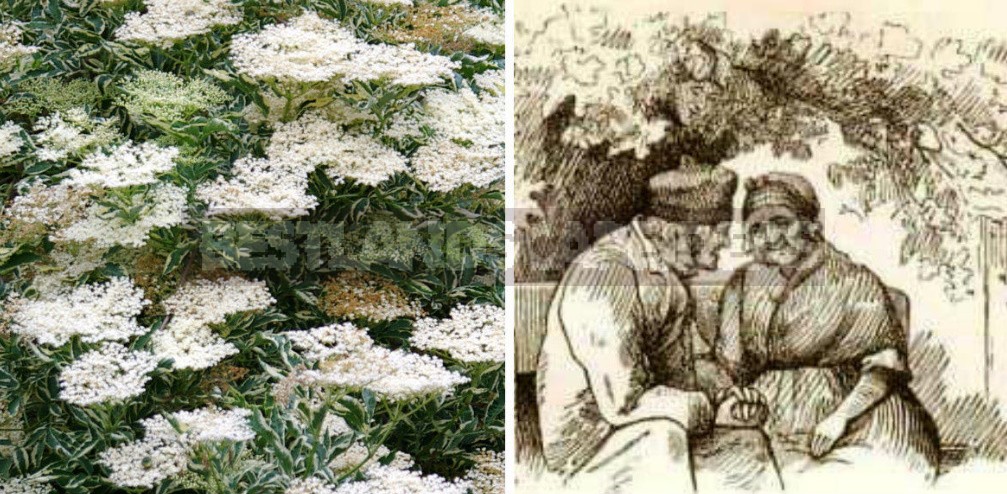
Nuances of elderberry wine preparation
The flowers are released from the stems, pour cold syrup with lemon (2 l – 1 PC., without zest) and insist 2-3 days. The extract is not boiled, drained and then the wine is prepared.
Filipendula
It is a perennial herbaceous, rhizomatous plant with an erect, leafy, ribbed stem, 50-200 cm tall.
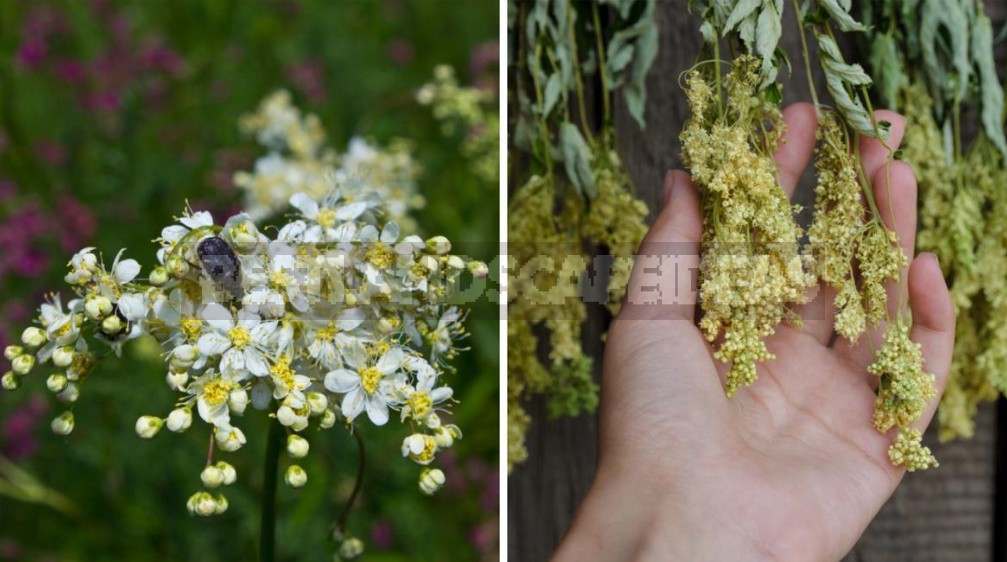
The floral nuances of the procurement of raw materials
It is better to break off the flowers from the peduncle. Harvested in June and July. The raw material is suitable for making wines up to 3 years.
Nuances of making wine from Filipendula
Fresh raw materials do not pour boiling water and do not cook, insist in cold boiled water for 2-3 days. You can use dry flowers, but in smaller quantities. It is necessary to aromatize, as the delicate smell of the flowers of Filipendula in the base contains basic pharmacy chords of methyl salicylate. When cooking the sugar syrup add the lemon.
Tilia cordata
The deciduous tree from the end of spring is strewn with yellowish fragrant flowers, sweetly smelling of honey, collected in inflorescences of 3-11.
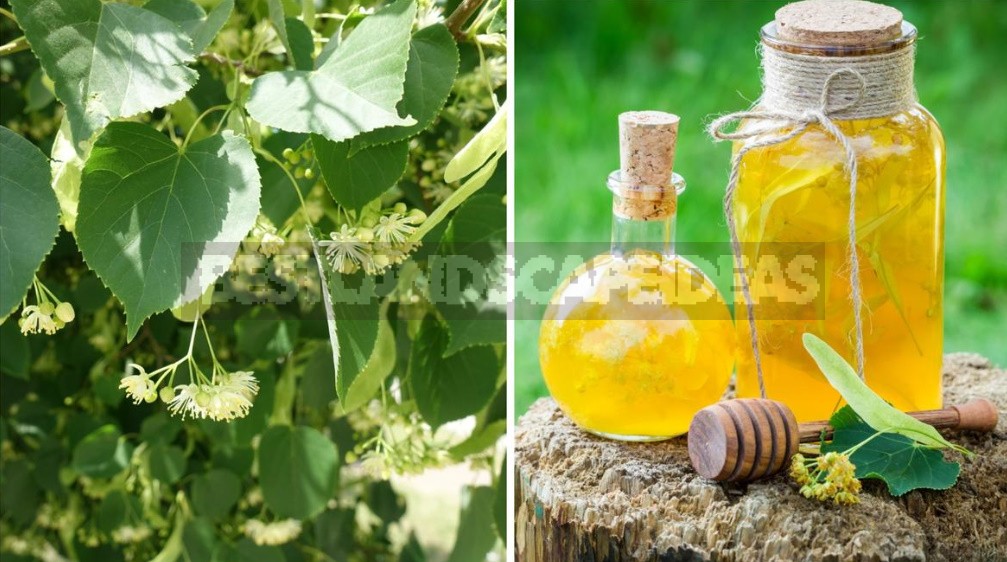
The floral nuances of the procurement of raw materials
In may and June, the inflorescences are collected together with oblong greenish-yellowish leaves (then it is necessary to cut the leaves and pedicels). The raw material can be used for 2 years.
Nuances of cooking lime wine
Syrup pour fresh flowers (you can use dry), cook until thick for 1 reception. At the end of cooking, add acid: 0.25-0.5 l – 1 lemon or 0.5 teaspoons of citric acid.
Tussilago farfara
Yellow inflorescences-baskets of Tussilago farfara appear early from under the snow. It is a herbaceous perennial with a creeping rhizome.
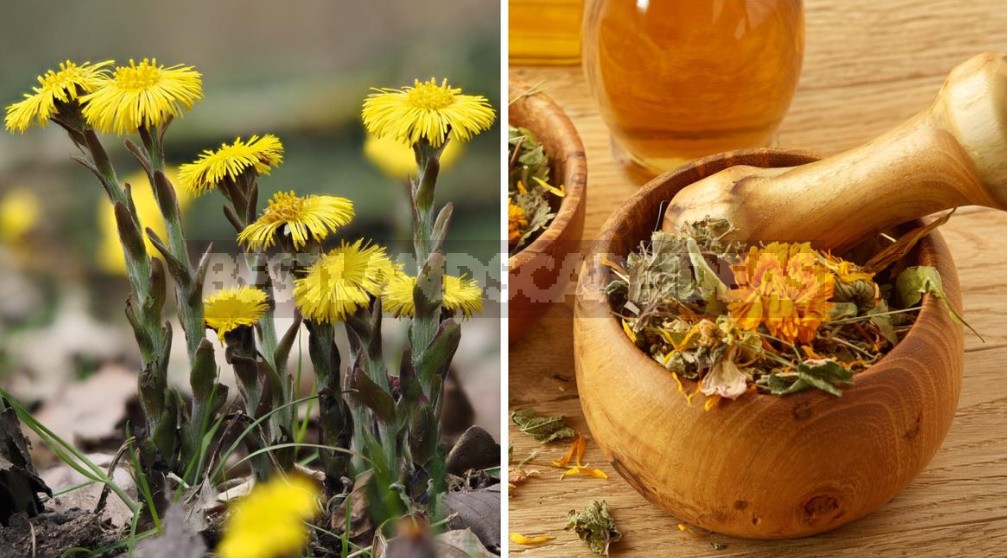
The floral nuances of the procurement of raw materials
Inflorescences (baskets only) are collected from February to April.
Nuances of wine preparation from Tussilago farfara inflorescences
It is necessary to aromatize.
Taraxacum officinale
Someone still considers it a weed that inhabits lawns, and someone has long revised its attitude to the universal plant and admires the solar flowering, prepares jam from baskets and makes homemade wine.
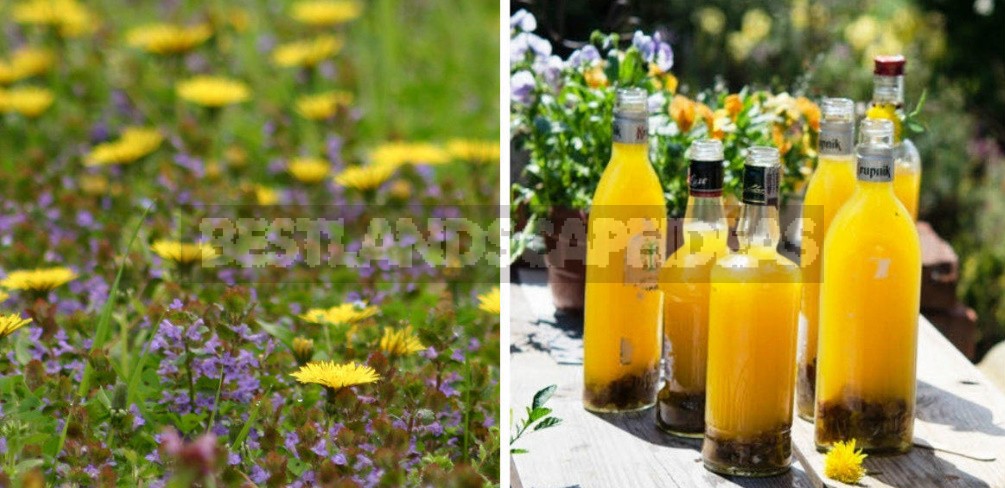
The wine tastes amazing! Unusual, ambiguous, slightly bitter, somewhat reminiscent of dry white grape wine.
The floral nuances of the procurement of raw materials
Bright yellow inflorescences-baskets are collected without hollow stems (arrows) in April, may, June.
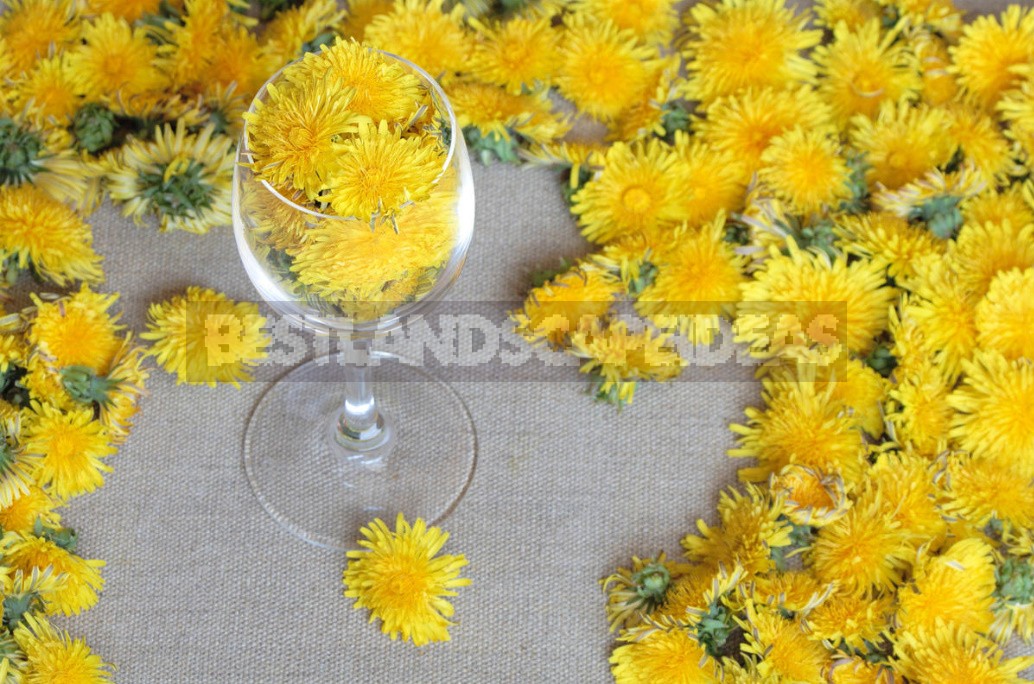
Nuances of wine preparation from inflorescences of Taraxacum officinale
Baskets-inflorescences are not boiled, pour boiling water, add a sprig (or a pinch of dry flowers) of cat’s wort or Melissa officinalis, insist. Instead of herbs, you can flavor the drink with citrus zest.
Rose
In the collection of plants there are several samples of roses, the petals of which are saturated with essential oil with a classic aroma. As a rule, rose wine is prepared from such raw materials, but other pink, red petals of fragrant varieties of garden roses are perfect for it.
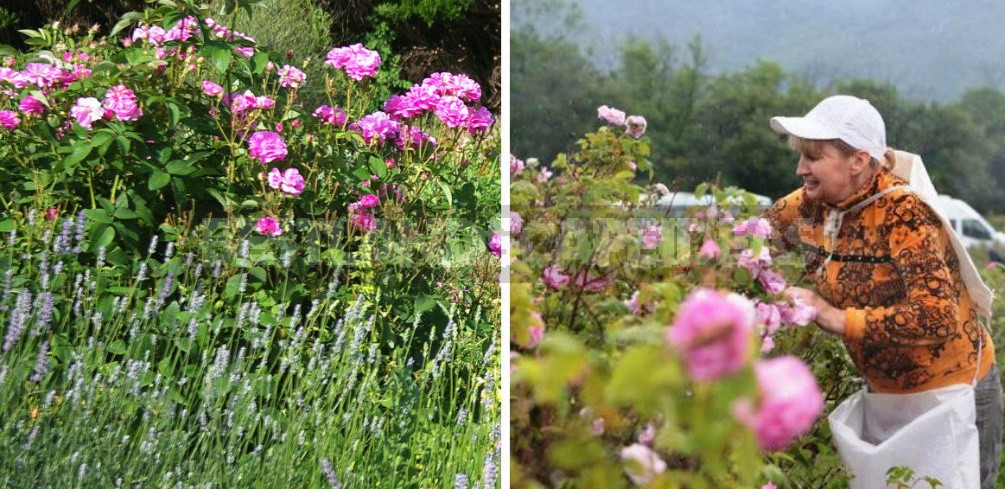
The floral nuances of the procurement of raw materials
Rose petals are collected in the morning in June and July, shake off the dust and insects, a little keep outdoors, spread out in 1 layer on a clean cloth or paper. Exempt from impurities (pedicels, cups with sepals, stamens and pistils). The raw material is kept suitable up to 2 years.
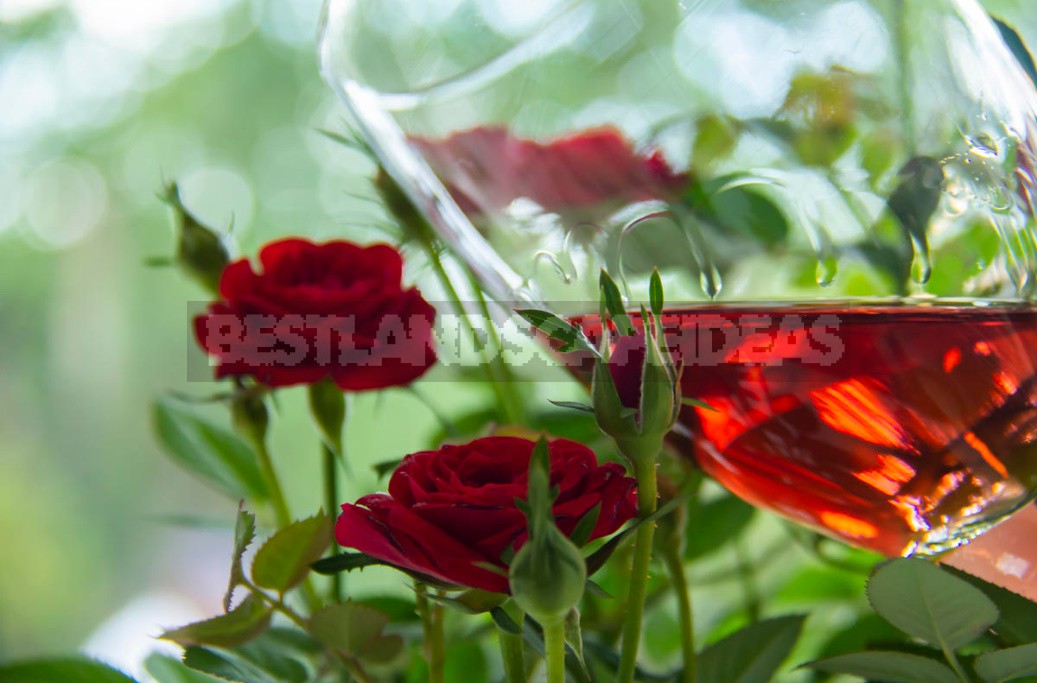
Nuances of making rose wine
On 1-liter Bank of fresh petals (tight stuffed) will require 1.5 are unaware water, 750 g sugar, 2 lemon without peel (only juice), 50 g raisins. Can be use and dry petals, but in smaller numbers, enough will 2 / 3 banks. Ferments wine for a long time: within 30-45 days. If during storage again precipitates, the drink is carefully poured into a clean container.
Robinia pseudoacacia
Flowering trees can be easily found by smell. Due to the enormous drought resistance Robinia pseudoacacia used to be often planted in forest belts, along highways. But to collect its fragrant drooping inflorescences should be exclusively away from roads.
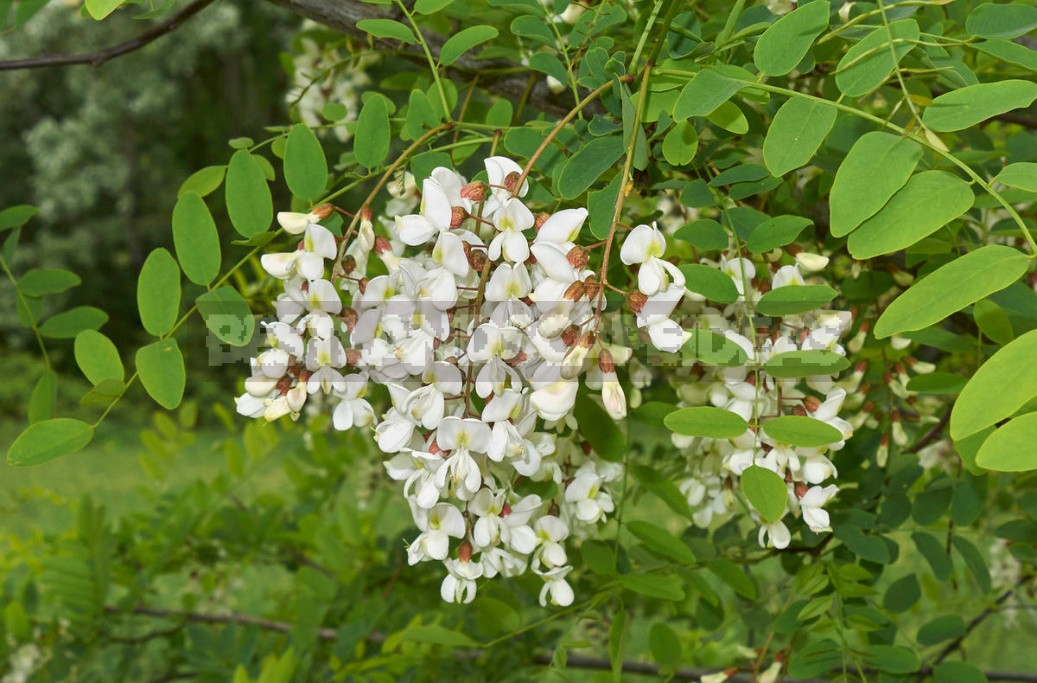
The floral nuances of the procurement of raw materials
The harvesting takes two months at the beginning of flowering-may and June. Break off only flowers, without peduncles. Raw materials are kept suitable up to 1 year.
The nuances of making wine from the flowers of Robinia pseudoacacia
You can use both fresh and dry flowers. The wine ferments strongly and for a long time, for 3-4 months. Add lemon without zest. Be sure to control the process, with a lack of acid, add lemon or citric acid.
And in conclusion-the traditional question: what homemade floral wines do you make? Do you have the secrets of cooking them?
